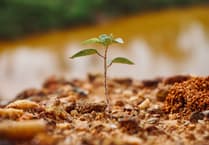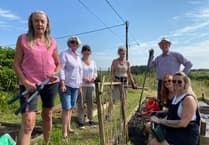Peatland restoration season on Dartmoor is gearing up for 2025/2026.
The work by the South West Peatland Partnership will focus on several key and remote sites across Dartmoor where degraded peatlands will have their damaged natural hydrology improved.
The work will aim to block erosion channels that take water off the moor. This will help reduce carbon loss, improve water quality, and diversify the species of birds and insects that breed and thrive on these areas.
George Kohler, SWPP senior restoration officer, said: “The past year has shown us how important peatland restoration is. It can’t wait. Fires on peatlands, and record-breaking rainfall over short periods combined with long periods of dry weather all take their toll.
“We need to get Dartmoor’s peatlands as healthy and resilient to the changing climate as we can now, to benefit us all in the coming years. More and more research continues to show how peat bogs are a crucial habitat in need of restoration.
“Working through the autumn and winter helps us to protect nesting bird species. We’re well prepared for the weather that a Dartmoor winter throws our way. You may spot our specialised low-pressure machines out on the moor this season, helping to stop ongoing erosion and crucially hold back water to raise that water table in the peat.”
The work is being delivered in partnership with local contractors, landowners and organisations.
Martin Gillard, SWPP historic environment officer, said: “Healthy peat keeps a record of human interactions with our environment and the climate dating back over thousands of years; if we let the peat dry out or erode away, we risk losing that information.
“In my role working with SWPP project officers and contractors I ensure that historic features are protected during the restoration works and carry out or commission surveys and studies that add to our knowledge of Dartmoor and its peatlands.”





Comments
This article has no comments yet. Be the first to leave a comment.